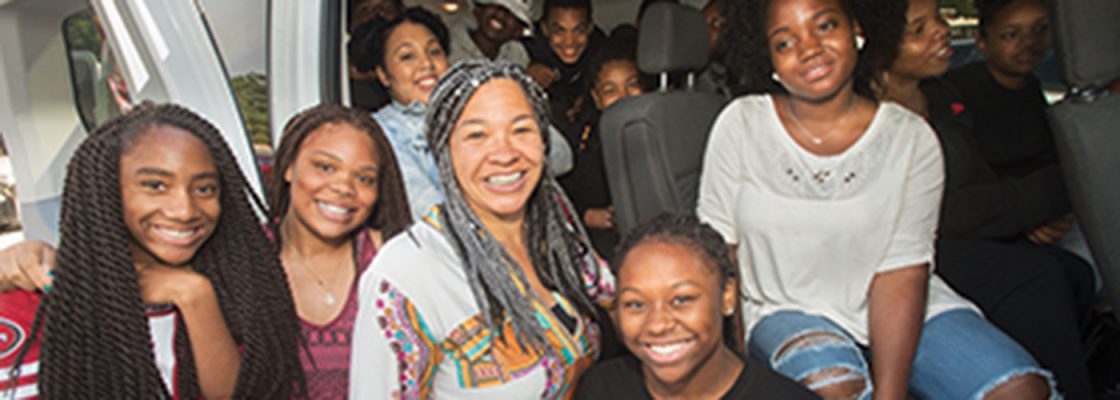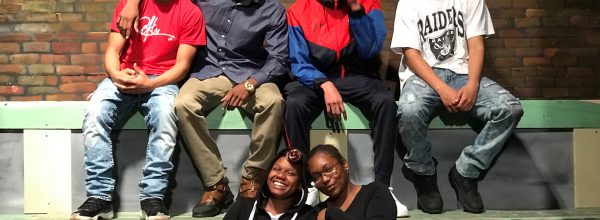Marin City Health and Wellness Center is taking a drastically different approach to reforming the systems failing black children.
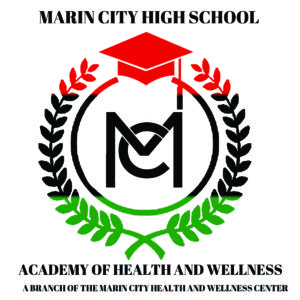 This year, I’ve had the honor and pleasure of coaching this health center in our iLab program, as it worked on its Marin City Academy of Health and Wellness, an alternative high school for black students who have dropped out of the public school. My primary role as a coach was to check in on their progress and be a thought partner as they came across challenges. The team had a clear vision and plan for the academy, so many of our conversations revolved around figuring out indicators of success that were relevant and meaningful. The academy focuses on STEM education, as well as black leadership, history, and cultural influences. The goal is to disrupt the cycle of poverty that keeps black people in Marin City poor and sick; by investing in these youth that have fallen through the cracks of traditional systems and preparing them to obtain their high school diploma, GED, or pass the California High School Proficiency Examination, this health center is doing just that.
This year, I’ve had the honor and pleasure of coaching this health center in our iLab program, as it worked on its Marin City Academy of Health and Wellness, an alternative high school for black students who have dropped out of the public school. My primary role as a coach was to check in on their progress and be a thought partner as they came across challenges. The team had a clear vision and plan for the academy, so many of our conversations revolved around figuring out indicators of success that were relevant and meaningful. The academy focuses on STEM education, as well as black leadership, history, and cultural influences. The goal is to disrupt the cycle of poverty that keeps black people in Marin City poor and sick; by investing in these youth that have fallen through the cracks of traditional systems and preparing them to obtain their high school diploma, GED, or pass the California High School Proficiency Examination, this health center is doing just that.
Generations of Discrimination
What you need to know about Marin City is that it’s an unincorporated area with the same zip code as Sausalito, but the demographics are starkly different. The area was originally developed to house shipyard workers in the 1940s, some of which were black families who’d relocated from the South in search of better economic opportunity. The area became predominantly black after the war, due to white flight and local zoning restrictions that kept black families out of other parts of the county. When most people think about Marin County, they think about wealthy progressives, tons of hiking trails, and great schools. Of course, “great schools” often means high average test scores, and doesn’t indicate how “great” it is for small subpopulations like the black youth in Marin City who come from vastly different backgrounds than the majority of their classmates. (Seventeen percent of residents in Marin City never finish high school, compared to 7 percent in Marin County, according to the 2015 American Community Survey.) Marin County is one of the most democratic counties in our state, yet it also has another distinction: In 2017, Marin County was the most racially unequal county in the state, according to the Race Counts report by the Advancement Project.
But it’s not just that black youth aren’t achieving academically. The impact of racial inequality combined with the disproportionate school suspension rates, incarceration trends, and curfew arrests of black youth are also contributing factors. The challenge in addressing social conditions that impact health is that the social conditions we see today are the result of generations of discrimination, disenfranchisement, and poverty.
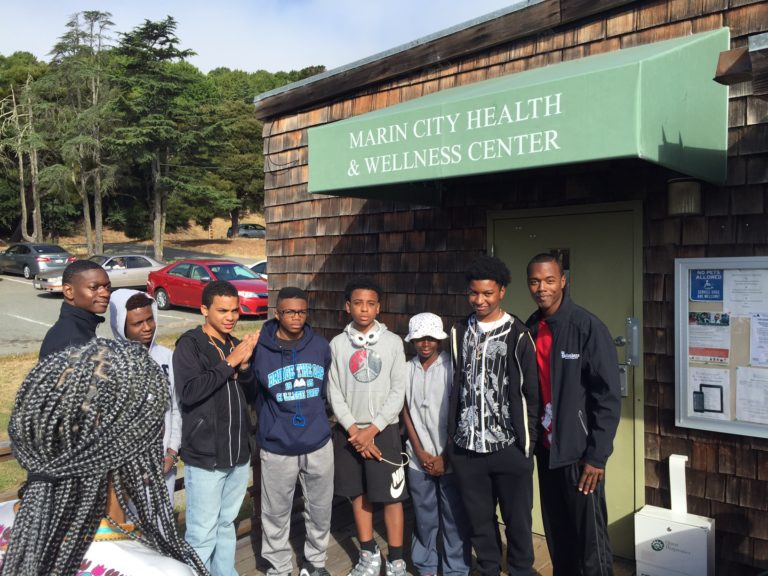
A Bold Approach
As a health center, what can you do to combat these far-reaching, deeply-entrenched social issues? Well, Marin City Health and Wellness Center started small by enrolling five students in their academy. The health center leadership made the decision to commit to doing whatever it is they can to holistically support these children and their families, most of which spans far beyond the typical roles and responsibilities of a health center or educational institution. So, though they did not have a planned space for a school on-site, they did repurpose a small conference room in their birthing center to hold classes.
While the academy includes foundational math and English coursework, the staff pays special attention to provide what these youth need in their lives, period. A consistent theme in our coaching calls was the desire to show the students that there are adults in their community holding them accountable and are 100 percent invested in them. Staff members pick up and drop off the youth to eliminate any transportation barriers that would prevent them from getting to the academy. The academy’s teachers are black and committed to teaching in a way that is culturally relevant and empowering.
The staff partners with community organizations to provide out-of-classroom learning experiences that would make concepts more salient. For instance, the students wrote their own black superhero plays in theater class after seeing the movie Black Panther. The students also learned about horticulture by visiting a nearby community garden and experiencing it for themselves. The staff are skilled in providing inspirational experiences for youth, as they’ve hosted Quality of Life Road Trips for several years. On these trips, they take high school students on a month-long journey across over 20 cities to learn first-hand about culture, community, business, and leadership.

This past spring, I sat in one of the classes while the instructors discussed the concept of resilience with the students. Rather than sharing the evidence-based research about resiliency measures or asking them to respond to a widely recognized definition of what resilience means, the instructor simply asked: “What does resilience mean to you?” By just listening to the youth’s experiences and self-reflections, I was blown away by how much I learned about their motivations, challenges, and dreams for themselves. In health care we often talk about getting the patient’s perspective. I see this is an example of how you truly start to understand what matters to your patients and how you can support them in reaching their self-defined goals.
Thinking Big
What I appreciated most about my experience with the Marin City Health and Wellness Center team was how they unapologetically name institutional racism as the root cause of today’s health disparities and other inequities. While leading with this truth, they’ve been able to stand firmly in their decisions to focus specifically on black youth, to work with black leaders, to say no to community partners that were not the right fit for exactly what they’re trying to accomplish, and to recognize their community’s specific assets and needs first when considering the use of evidence-based models. Operating a small, private academy may not be the right solution for many other health centers, though I hope this health center inspires you to think big and to be intentional in figuring out what actions you can take to make a meaningful difference in your community.
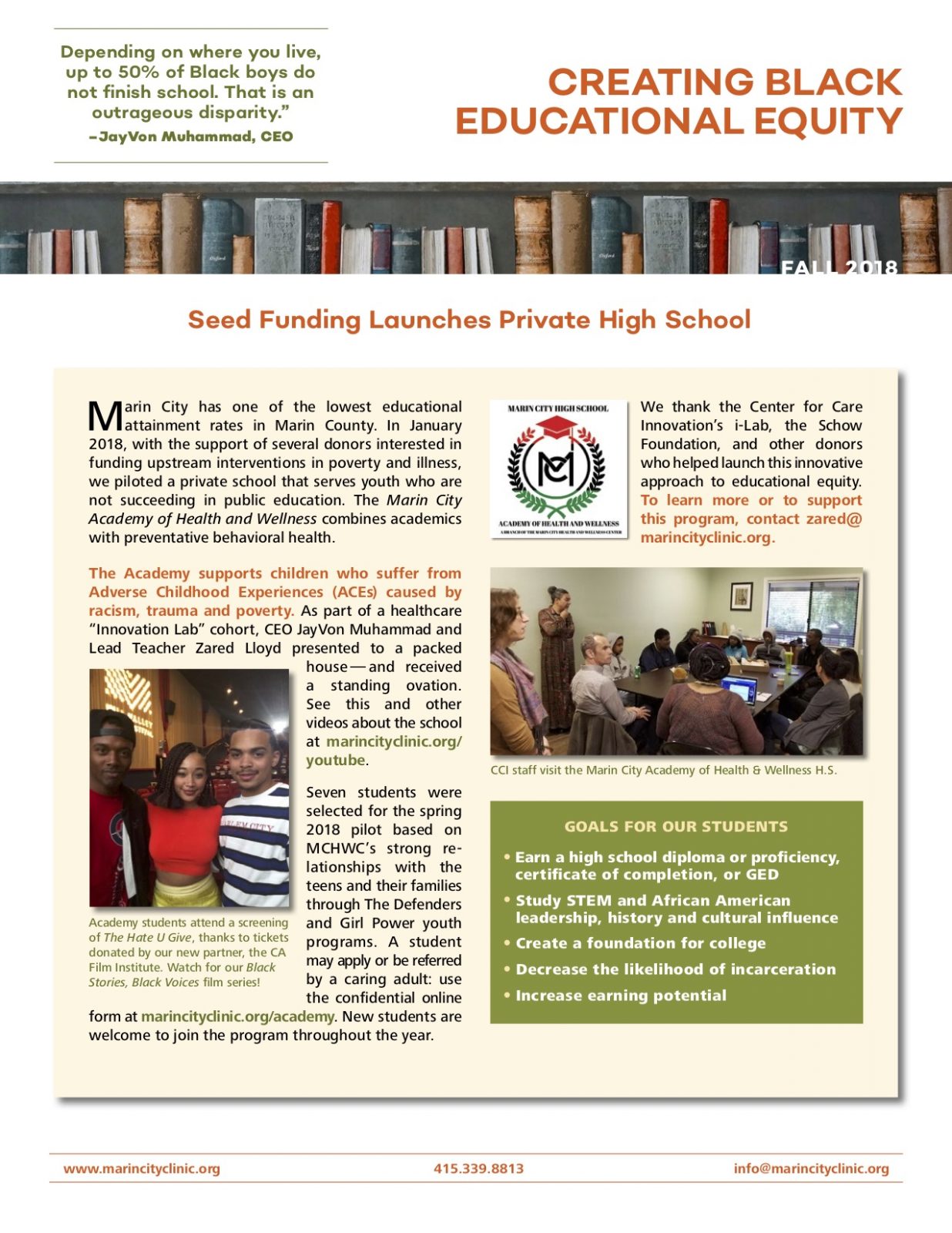
Find this useful or interesting? We’re constantly sharing stuff like this. Sign up to receive our newsletter to stay in the loop.

